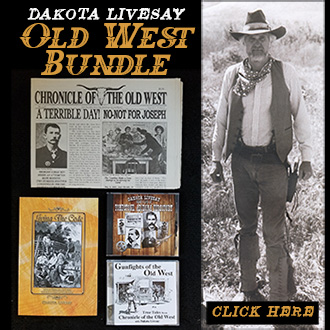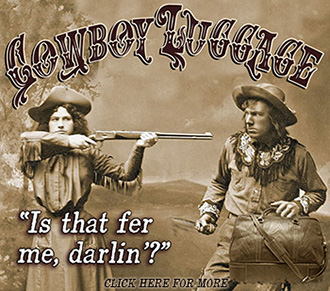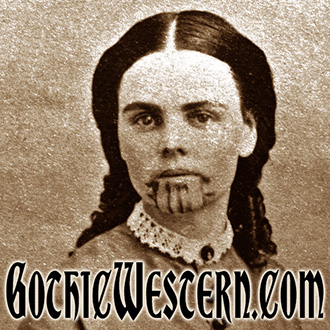Old West Book Review: Valley of the Guns
 Valley Of The Guns, Eduarado Obregôn Pagan, University of Oklahoma Press, $29.95, Cloth. Maps, Illustrations, Photos, Notes, Bibliography, Index.
Valley Of The Guns, Eduarado Obregôn Pagan, University of Oklahoma Press, $29.95, Cloth. Maps, Illustrations, Photos, Notes, Bibliography, Index.
“Pleasant Valley” conjures up images of warm summer evenings, horses quietly munching hay in the corral, Mom and Dad laughing quietly on the porch while kids play with a favorite pet lamb. But don’t be fooled. Pleasant Valley was only a name.
The location is northern Arizona below the Mogollon Rim, made up of rough, mountainous country near Indian reservations and a long way to town. Men of derring-do pioneering spirit, determined to find success in a world of sprawling cattle and mining opportunities settled here. Some brought wives with them, while most came alone. They built sturdy one-room cabins compete with gun ports in the log walls. Roving Apaches, sometimes fleeing the nearby reservation skulked amid the tall trees while coveting white man’s supplies and horses.
The late 1880s saw these settlers always on the lookout for trouble, while determined to make a good life. Folks settling in the area soon made friendships and alliances with neighbors. A long way from law enforcement, they learned to band together to protect one another.
However, a series of misunderstandings, revenge and stubborn pride led to the violent deaths of eighteen men, four seriously wounded, and one man missing. The leading families involved were the Grahams and the Tewksburys. The Tewksburys were Arizona natives with an Indian mother and white father. The Grahams, originally from Iowa, like many young men of that era, decided to head “west” eventually meeting the Tewksburys in Pleasant Valley, Arizona.
The author of this book does a careful background search into the lives and origins of both these families and their friends. He delves into their history, what made them act and react to situations resulting in the Pleasant Valley War. Over the years many historians have suggested the conflict was between sheep men and cattlemen, but this is not exactly true. While the Grahams specialized in raising horses, the Tewksburys had both cattle and sheep, and at times shared grazing land with not only the Grahams, but others in the valley that had both cattle and sheep. Many families helped one another in their quest to protect themselves from both rustlers and Apaches, thus the exact cause of the feud is hard to pin down.
What is known is that a lot of men died. There was great fear in the community as even vigilantes and night riders took to the trails. One by one, men died violently, while friends and relatives got revenge. There was even the ghastly lynching of three young ranchers whose bodies were left dangling from a tree for many days as a warning to others who might consider stealing cows.
This book is easy to read, written in a style designed to inform as well as keep the reader turning pages. The author digs into the underlying causes of fear, revenge, guilt, anger and hatred. Blood feuds always result in senseless tragedy, and when they end, nobody seems able to remember what really started it all. The author explains how humans react naturally during moments of grave danger. We either fight, flee, or freeze. We don’t know what we will really do until actually confronted with the emergency that requires instant decision.
Fear, murder and revenge rode those mountain trails. The author of this book has done a creditable job of bringing the story of the Pleasant Valley War to life. He has weeded through all the controversy, explains what happened to all of the participants of the conflict, and leaves the reader with much to ponder after turning the last page. This is a good addition to your Old West library.
Editor’s Note: The reviewer, Phyllis Morreale-de la Garza is the author of numerous books about the Old West including Nine Days at Dragoon Springs, published by Silk Label Books, P.O. Box 399, Unionville, New York ,10988. www.silklabelbooks.com




